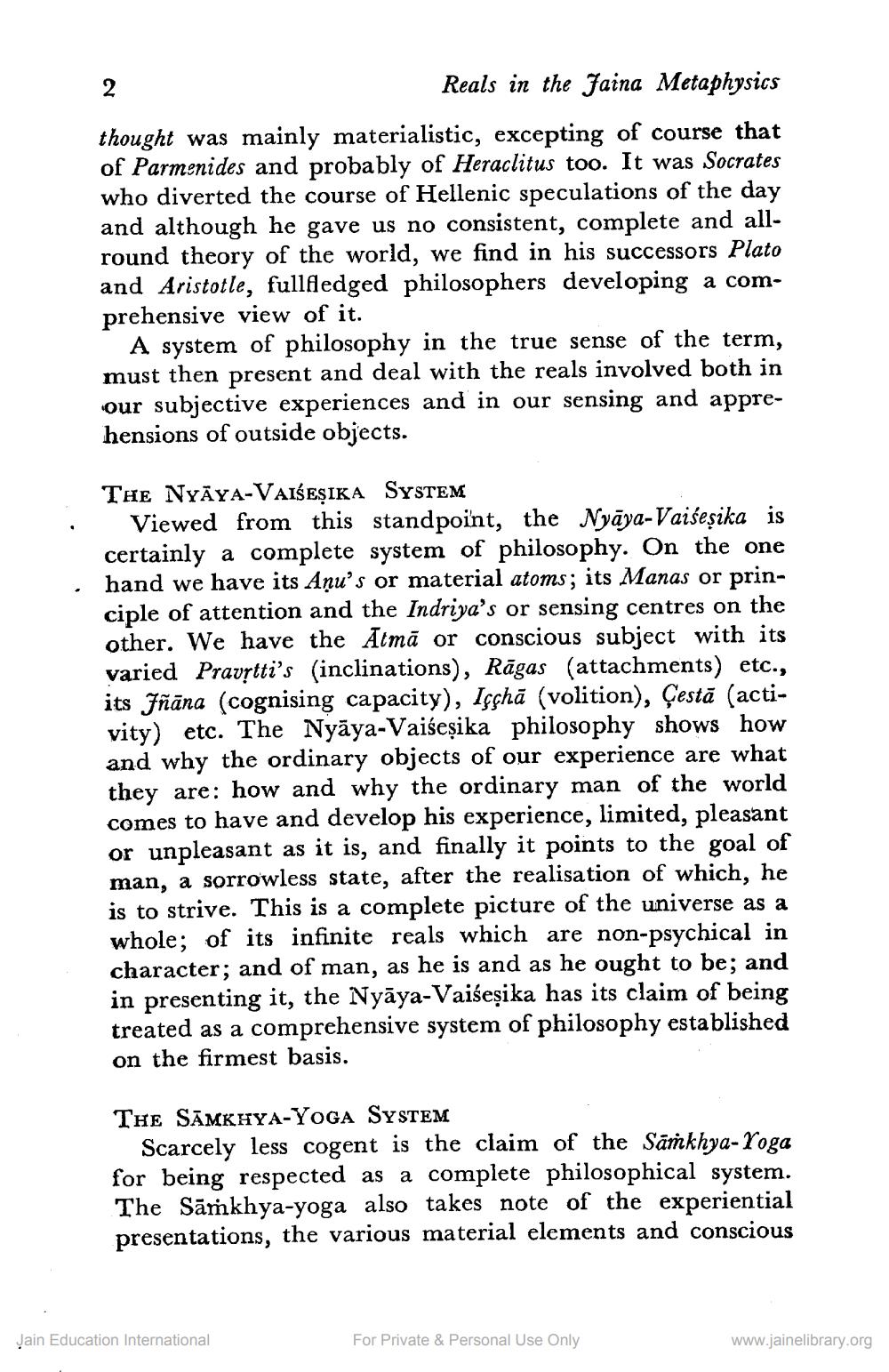________________
Reals in the Jaina Metaphysics thought was mainly materialistic, excepting of course that of Parmenides and probably of Heraclitus too. It was Socrates who diverted the course of Hellenic speculations of the day and although he gave us no consistent, complete and allround theory of the world, we find in his successors Plato and Aristotle, fullfledged philosophers developing a comprehensive view of it.
A system of philosophy in the true sense of the term, must then present and deal with the reals involved both in our subjective experiences and in our sensing and apprehensions of outside objects.
THE NYAYA-VAISEȘIKA SYSTEM
Viewed from this standpoint, the Nyāya-Vaiseșika is certainly a complete system of philosophy. On the one · hand we have its Aņu's or material atoms; its Manas or prin
ciple of attention and the Indriya's or sensing centres on the other. We have the Atmā or conscious subject with its varied Pravịtti's (inclinations), Rāgas (attachments) etc., its Jñāna (cognising capacity), Igçhā (volition), Çestā (activity) etc. The Nyāya-Vaiseșika philosophy shows how and why the ordinary objects of our experience are what they are: how and why the ordinary man of the world comes to have and develop his experience, limited, pleasant or unpleasant as it is, and finally it points to the goal of man, a sorrowless state, after the realisation of which, he is to strive. This is a complete picture of the universe as a whole; of its infinite reals which are non-psychical in character; and of man, as he is and as he ought to be; and in presenting it, the Nyāya-Vaiseșika has its claim of being treated as a comprehensive system of philosophy established on the firmest basis.
THE SAMKHYA-YOGA SYSTEM
Scarcely less cogent is the claim of the Samkhya-Yoga for being respected as a complete philosophical system. The Sāmkhya-yoga also takes note of the experiential presentations, the various material elements and conscious
Jain Education International
For Private & Personal Use Only
www.jainelibrary.org




